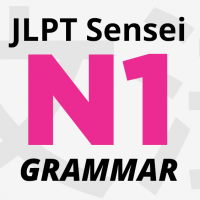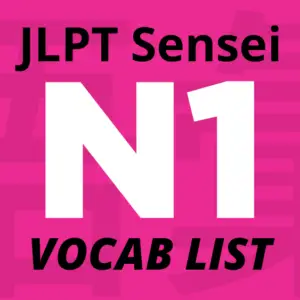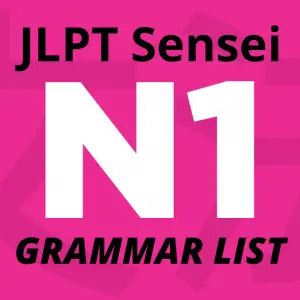Aprende gramática del idioma Japonés: かたわら (katawara). Significado: while; at the same time; in addition.
This grammar point is used to express that two things are being done at the same time, but NOT at the same instant.
For example, we CANNOT use (ダメ):
テレビを見るかたわら食べる
terebi wo miru katawara taberu
eat while watching TV
For simultaneous actions, use 見ながら (minagara) – while watching
The action introduced before かたわら is the more emphasized action. The action that follows afterwords is more of an «addition» (in addition).
Example A
仕事をするかたわらボランティアもやっている
shigoto wo suru katawara borantia mo yatteiru
they work a job, but also do volunteer work

Access ALL extra downloads, ebooks, and study guides by supporting JLPT Sensei on Patreon.
かたわら - Oraciones de ejemplos 例文
Cada oración de ejemplo incluye ayudas como la lectura (hiragana) en Japónes, la lectura en romaji, y la traducción en Español.
Da clic en el siguiente botón rojo para alternar todas las ayudas, o puedes dar clic en los botones individuales para mostrar únicamente las que desees ver.
Ejemplo #1
母は農業のかたわら、夜はバイトをやっている。
Ejemplo #2
この小説家は執筆のかたわら、趣味でピアノを弾いている。
Ejemplo #3
彼女は子供を育てるかたわら、家で料理教室も開いています。
Ejemplo #4
彼は俳優の仕事をするかたわら、テニスの試合にも出ています。
Vocabulario 語彙
| Kanji 漢字 |
Kana カナ |
English 英語 |
|---|---|---|
| 農業 | のうぎょう | farming |
| 小説家 | しょうせつか | novelist |
| 執筆 | しっぴつ | writing (profession) |
| 趣味で | しゅみで | as a hobby |
| 俳優 | はいゆう | actor |
Ver todas las lecciones de gramática del JLPT N1


